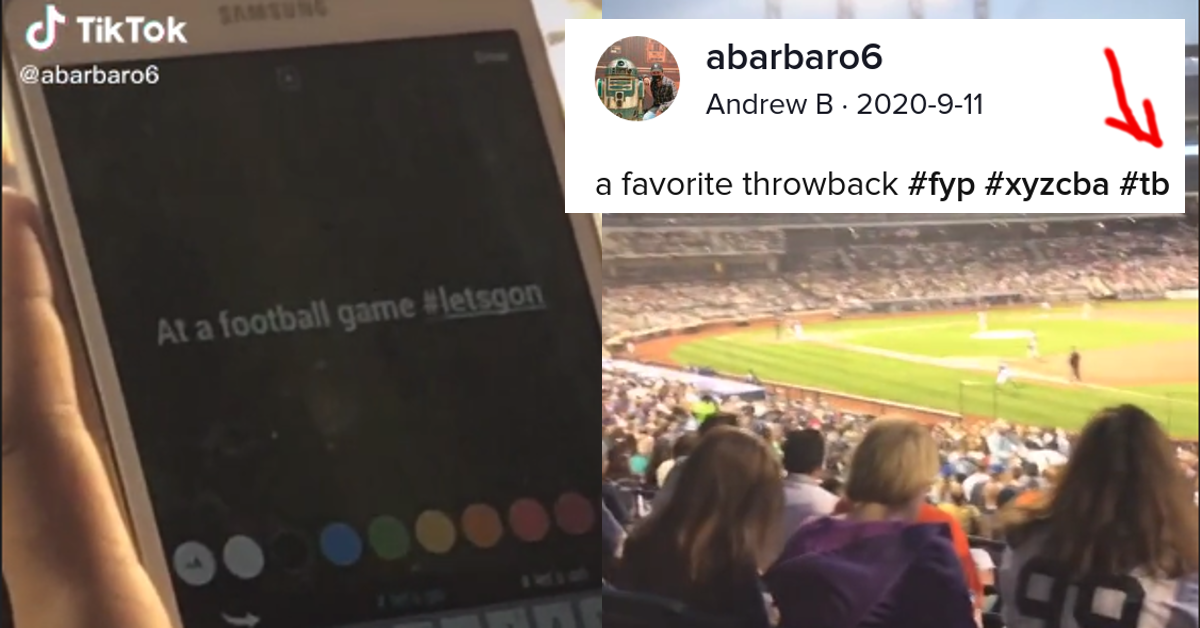
Mar. 24 2021, Published 12:18 p.m. ET
Understanding shorthand e-speak is generally a pretty easy endeavor. Sure you've got a bunch of old fogeys, like me, who will want to hate on anything new and unfamiliar, but there are some terminologies that are fairly straightforward, like /hj and /j on TikTok. But then there are terms that are a little more difficult to figure out. For example, what does TB mean on TikTok?
Article continues below advertisem*nt
TB may not mean what you think it does on TikTok.
The shorthand /hj means half-joking, /j means joking, and /s means sarcasm, and so on and so forth. Those are pretty easy to understand. Following this logic, you would assume that the TB means tuberculosis...or maybe "truth be told" or truffle butter... Who the heck knows?
But to understand what TB means requires a little bit of an understanding of the nature of social media posting.
@ciscoyj 😭 #fyp #foryourpage #viral #puppy #doggy #dogsoftiktok #foryou #tiktok #dog #tb
♬ i didnt think this would blow up - potatooooSee AlsoYeehaw, bae: An embiggened Scrabble dictionary cuts slurs and adds words new and oldWhat Does 'Sheesh' Mean? Explaining That Viral TikTok Slang | On Air with Ryan Seacrest | Ryan SeacrestYield to Worst (YTW): What It Is and the Formula to Calculate ItWhat Does SS Mean? Snapchat, Texting, and More
Article continues below advertisem*nt
Some people broadly define TB as shorthand for one's online "legacy," and while that may sound like it makes no sense whatsoever, it does when you consider what TB is an abbreviation of: "throwback."
So if you're posting an older video from your camera roll or maybe are trying to get some more eyes on a previous post that you thought didn't get enough love, putting TB in the caption will let folks know that the clip or picture isn't as recent as some may think.
@stepbroilay #tb to the moment #liluzivert paid for student’s 90,000$ tuition 💸 What are your thoughts on Lil Uzi Vert? #hiphop #rap #fyp #foruou #college
♬ original sound - stepbroilay
Article continues below advertisem*nt
There are tons of examples of the hashtag being implemented all over social media, whether it's on TikTok, Instagram, or Facebook.
But the shorthand phrase often carries some heartwarming implications with it. Uploaders will sometimes include the caption in posts honoring old friends, family members, or a location that they're yearning for from their past.
@abarbaro6 a favorite throwback #fyp #xyzcba #tb
♬ Whole Lotta Choppas - Sada Baby
Article continues below advertisem*nt
What does "TB" mean on Snapchat? It's the same thing.
While back in the day of alpha-numeric keypads on flip phones, "TB" meant "text back," these days it's pretty much understood that it's a "throwback" of sorts. That is true of whatever social media platform you're using, including Snapchat.
The yellow-and-white Ghost-branded application is managing to expand its user base with its Spotlight feature.
Article continues below advertisem*nt
@alliecat3712 #stitch with @starstufff this girl got an allergy test... her reaction to everything is how I react to ant bites if I don’t treat it ASAP😂#tb #ant
♬ Heart Of Glass (Live from the iHeart Festival) - Miley Cyrus
@teritersi that type of sh*t don’t faze a player💯 #danialves #soccer #fyp #foryou #viral #rags2riches #tb #football
♬ Rags2Riches (feat. ATR Son Son) - Rod Wave
Article continues below advertisem*nt
The new app isn't exactly rivaling TikTok or Instagram Reels, but there are plenty of Snapchat users who are constantly uploading clips in the hopes of getting themselves some of that sweet, sweet cash Snap's giving out on the daily. In fact, there are tons of people who've already managed to make life-changing amounts of dough on Spotlight.
@rubenn.cn Reposting! dont report #greenscreen #flashback #fypシ #CanYouWorkIt #StrictlyCurls #foryoupage #tb #memories #funny #old #foryou #4u #CanYouWorkIt #rep
♬ Tounge Tied - Tik Toker
Article continues below advertisem*nt
@jacob_jefferies early gains with the iconic dog shirt #fyp #foryou #fyp #fy #tb
♬ I'm Just a Kid - Simple Plan
Who knows, maybe in a few years they'll be uploading clips of the videos that earned them the most amount of money or helped pave the way to them becoming e-celebs, and they'll include #TB in the caption along with a story of how important that particular video was to them. Hey, in the words of Ellie Goulding, "Anything could happen."
